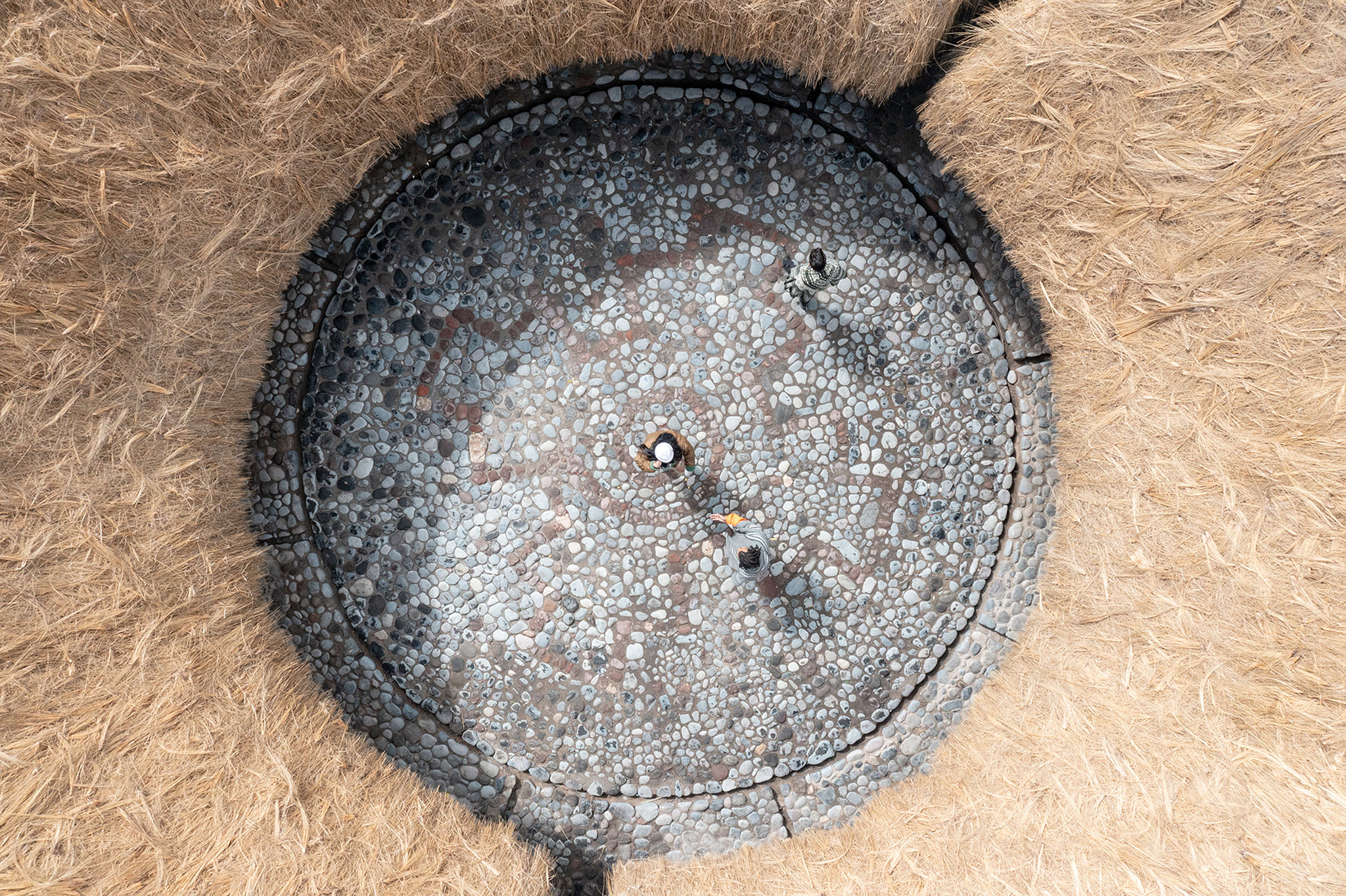
The design for the community of Shalalá, by Marie Combette and Daniel Moreno Flores, aims to create the appropriate space to facilitate sustainable economic development that is respectful of its environment, making a respectful reading of the territory, its inhabitants and its culture.
A process of creation and construction very committed to this mountainous area of the Andes, with mountains that exceed 4,000 meters in altitude, in an Andean context of indigenous agriculture and livestock, where Quechua is spoken and where everything is impregnated by the strength and beauty of the landscape.
The plan of the center is circular, with an entrance and an exit to give all the artisans' stalls the same opportunity and hierarchy. The center of this space is used for events, performances, dances... and its pavement was made with cobblestones arranged like the chakana, an Andean cross that points to the cardinal points.
Chaki Wasi was built by the community: the minga, a collective construction work, which involved a rescue of the cultural and collaborative traditions of its inhabitants, in which the elders had the opportunity to transmit their knowledge to the younger ones, generating a connection between generations.

Chaki Wasi, Shalalá community crafts center by La Cabina de la Curiosidad. Photography by JAG Studio.

Chaki Wasi, Shalalá community crafts center by La Cabina de la Curiosidad. Photography by JAG Studio.
Project description by La Cabina de la Curiosidad
We are at the summit of the Quilotoa Lagoon, a volcanic crater with turquoise water at 3,915 meters above sea level. The indigenous community of Shalalá promotes sustainable tourism in symbiosis with nature, valuing and magnifying it. They have a wooden viewpoint (built-in 2013) that enhances the experience with the lagoon, along with tourist infrastructure, and now a crafts center that, through its circular form, seeks to offer the same opportunity for each stall. With its cobblestone central plaza, it becomes a space that fosters gatherings and celebrations. The crafts center is called Chaki Wasi, which in Kichwa means "house made of straw from the ground up."
Innovation: Chaki Wasi aspire to represent Andean culture through traditional vernacular techniques and serve as an educational platform to showcase a way of living in the Andean landscape. It is built with river stone foundations, a structure made of eucalyptus wood tied with cabuya (fiber from the agave plant), and supported with large dowels of the chakra (small pieces of young eucalyptus wood). The hammer used to drive the dowels was a large wooden mallet; all the fastenings are made with repeatedly used chakllas, and the large roof covering is made of straw. There is a vision of regenerating the community's land, living in harmony with nature, being carbon-positive, and returning waste to the earth. The future outlook is rooted in the wisdom and territorial knowledge of the past.

Emancipation: This is a construction based on communal logic; those in charge rotated weekly. Permanent mingas (collective work parties) were held with the participation of women, men, and youth from the community. Interesting links were formed with neighboring communities to obtain wood and straw. Everything was built by hand, with minimal tools, and the structural modules were raised and placed with everyone's strength, thanks to ropes and collective unity. When placing the straw, there was a transmission of vernacular knowledge, and we celebrated each stage according to Andean culture and worldview.

Adaptability: There is an intergenerational transmission of knowledge and culture in ways of doing, in rites, and customs. Culture is sustained through co-designing and co-constructing, and architecture is democratized as a fundamental asset for human development and the environment.




















































